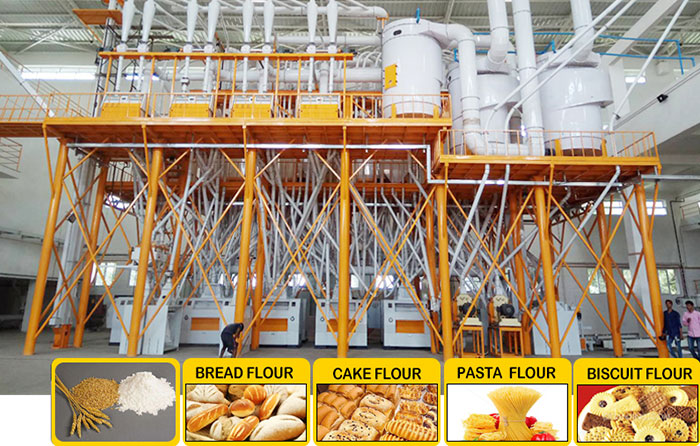Nourishing Innovation: Exploring the Vitality of a Wheat Flour Milling Plant
Amidst the global tapestry of agriculture and food production, a cornerstone of sustenance emerges—the Wheat Flour Milling Plant. This bustling hub of innovation and technology stands as a testament to the age-old practice of transforming wheat grains into the staple nourishment that feeds countless households and communities. This article delves into the intricate workings and significance of a Wheat Flour Milling Plant, highlighting its pivotal role in providing the foundation for an array of culinary creations.

Unveiling the Flour Milling Process
At the heart of a Wheat Milling Plant lies a meticulously designed system that harnesses cutting-edge technology to process wheat into the essential ingredient: flour. The process unfolds through a series of steps, each contributing to the refinement of the wheat grains:
Cleaning and Conditioning: The journey begins with the thorough cleaning of raw wheat grains to remove impurities such as stones, dust, and foreign particles. The conditioned grains are then adjusted for moisture content to optimize the subsequent milling stages.
Milling: The conditioned wheat is sent through a sequence of rollers, each set to progressively reduce the grain size. The result is a precise separation of the endosperm (flour-producing part) from the bran and germ.
Sifting and Separation: The milled flour is sifted through screens to separate different flour streams based on particle size. This process enables the production of various types of flours, from fine pastry flour to coarser whole wheat flour.
Purification and Fortification: The separated flour streams undergo purification to eliminate any remaining impurities. Depending on regional regulations and health considerations, the flour may also be enriched with vitamins and minerals to enhance its nutritional value.
Packaging and Distribution: The final product is carefully packaged and readied for distribution to consumers, bakeries, food manufacturers, and other industries that rely on wheat flour as a fundamental ingredient.
A Beacon of Innovation
The evolution of Wheat Flour Milling Machine mirrors the strides made in agricultural technology and food production. Advances in milling equipment, automation, quality control, and energy efficiency have transformed these plants into beacons of innovation:
Precision Milling: Modern milling equipment employs cutting-edge technology to achieve precise separation of flour components. This precision enhances flour quality and consistency, meeting the demands of diverse applications.
Sustainability: Flour milling plants embrace sustainable practices, incorporating energy-efficient systems, waste reduction measures, and responsible sourcing of raw materials. These efforts contribute to minimizing the environmental footprint of flour production.
Quality Assurance: Rigorous quality control processes ensure that the flour meets the highest standards of hygiene, safety, and nutritional content. This commitment to quality reassures consumers of the integrity of the final product.
In conclusion, a Wheat Flour Milling Plant stands as a testament to the harmonious blend of tradition and innovation. Beyond its mechanical processes, it serves as a catalyst for nourishment, culinary creativity, and global food security. As technology continues to propel the evolution of agriculture and food production, the Wheat Flour Milling Plant remains an enduring symbol of human ingenuity and the art of transforming humble wheat grains into the sustenance that fuels communities around the world.
评论
发表评论